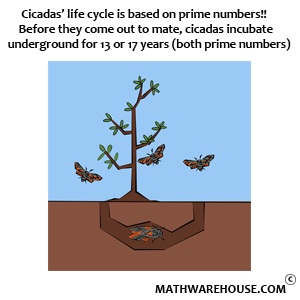Quick Overview
$$ \begin{array}{lcl} \frac d {dx}\left(\sin^{-1} x\right) = \displaystyle \frac 1 {\sqrt{1-x^2}} &&&& \frac d {dx}\left(\cos^{-1} x\right) = \displaystyle \frac{-1}{\sqrt{1-x^2}}\\[18pt] \frac d {dx}\left(\tan^{-1} x\right) = \displaystyle \frac 1 {1+x^2} &&&& \frac d {dx}\left(\cot^{-1} x\right) = \displaystyle \frac{-1}{1+x^2}\\[18pt] \frac d {dx}\left(\sec^{-1} x\right) = \displaystyle \frac 1 {|x|\sqrt{x^2 -1}} &&&& \frac d {dx}\left(\csc^{-1} x\right) = \displaystyle \frac{-1}{|x|\sqrt{x^2 -1}} \end{array} $$
Alternate Notation
Sometimes the inverse trig functions are notated with "arc" in front of their names rather than the superscript "-1". The table below shows both names for each function.
$$ \begin{array}{lcl} \sin^{-1} x = \arcsin x &&&& \cos^{-1} x = \arccos x\\[6pt] \tan^{-1} x = \arctan x &&&& \cot^{-1} x = \arccot x\\[6pt] \sec^{-1} x = \arcsec x &&&& \csc^{-1} x = \arccsc x\\[6pt] \end{array} $$
Examples
Example 1
Suppose $$f(x) = \sin^{-1} 9x$$. Find $$f'(x)$$.
Step 1Differentiate using the chain rule.
$$ \begin{align*} f'(x) & = \frac 1 {\sqrt{1 - (9x)^2}} \cdot \frac d {dx}\left(9x\right)\\[6pt] & = \frac 1 {\sqrt{1 - 81x^2}} \cdot 9\\[6pt] & = \frac 9 {\sqrt{1 - 81x^2}} \end{align*} $$
Answer$$\displaystyle f'(x) = \frac 9 {\sqrt{1-81x^2}}$$
Example 2
Find $$\displaystyle \frac d {dx}\left(x^2\arctan 6x\right)$$.
Step 1Identify the factors that make up the function.
$$ \frac d {dx}\left(\blue{x^2}\,\red{\arctan 6x}\right) $$
Step 2Differentiate using the product rule.
$$ \begin{align*} \frac d {dx}\left(x^2\arctan x\right) & = \blue{2x}\arctan x + x^2\cdot \red{\frac 1 {1 + (6x)^2}\cdot 6}\\[6pt] & = 2x\arctan x + \frac{6x^2}{1 + 36x^2} \end{align*} $$
Answer$$\displaystyle \frac d {dx}\left(x^2\arctan 6x\right) = 2x\arctan x + \frac{6x^2}{1 + 36x^2}$$.
Example 3
Suppose $$\displaystyle f(x) = \frac{8x}{\arccsc 12x}$$. $$f'\left(\frac 1 6\right)$$.
Step 1Differentiate using the quotient rule. The parts in $$\blue{blue}$$ are related to the numerator.
$$ \begin{align*} f'(x) & = \frac{(\arccsc 12x)\cdot \blue 8 - \blue{8x}\cdot \frac{-1}{|12x|\sqrt{(12x)^2-1}}\cdot 12}{\arccsc^2 12x} \end{align*} $$
Step 2Simplify.
$$ \begin{align*} f'(x) & = \frac{(\arccsc 12x)\cdot 8 - 8x\cdot \frac{-1}{|12x|\sqrt{(12x)^2-1}}\cdot 12}{\arccsc^2 12x}\\[6pt] & = \frac{8\arccsc 12x + \frac{8x\cdot 12}{12|x|\sqrt{144x^2-1}}}{\arccsc^2 12x}\\[6pt] & = \frac{8\arccsc 12x + \frac{8x}{|x|\sqrt{144x^2-1}}}{\arccsc^2 12x}\cdot \blue{\frac{|x|\sqrt{144x^2-1}}{|x|\sqrt{144x^2-1}}}\\[6pt] & = \frac{8\arccsc 12x\cdot |x|\sqrt{144x^2-1} + 8x}{\arccsc^2 12x\cdot |x|\sqrt{144x^2-1}}\\[6pt] & = \frac{8x + 8|x|\sqrt{144x^2-1}\cdot\arccsc 12x}{|x|\sqrt{144x^2-1}\cdot\arccsc^2 12x} \end{align*} $$
Step 3Evaluate at $$x = \frac 1 6$$
$$ \begin{align*} f'(\blue{1/6}) & = \frac{8(\blue{1/6}) + 8|\blue{1/6}|\sqrt{144(\blue {1/6})^2-1}\cdot\arccsc (12\cdot\blue{1/6})}{|\blue {1/6}|\sqrt{144(\blue {1/6})^2-1}\cdot\arccsc^2 (12\cdot \blue{1/6})}\\[6pt] & = \frac{\frac 8 6 + \frac 8 6\sqrt{144\left(\frac 1 {36}\right)-1}\cdot\arccsc 2}{\frac1 6\sqrt{144\left(\frac 1 {36}\right)-1}\cdot(\arccsc 2)^2}\\[6pt] & = \frac{8 + 8\sqrt{4-1}\cdot\frac \pi 6}{\sqrt{4-1}\cdot\left(\frac\pi 6\right)^2}\\[6pt] & = \frac{8 + 8\sqrt 3\cdot\frac \pi 6}{\sqrt 3\cdot\frac{\pi^2}{36}}\\[6pt] & = \frac{8 + \frac{4\pi} 3\sqrt 3}{\frac{\pi^2}{36}\sqrt 3}\\[6pt] & = \frac{288 + 48\pi\sqrt 3}{\pi^2\sqrt 3}\\[6pt] & = \frac{288\sqrt 3 + 144\pi}{3\pi^2}\\[6pt] & = \frac{96\sqrt 3 + 48\pi}{\pi^2} \end{align*} $$
Answer$$\displaystyle f'\left(\frac 1 6\right) = \frac{96\sqrt 3 + 48\pi}{\pi^2}$$
Example 4
Suppose $$f(x) = \sqrt[3]{\cot^{-1} 7x}$$. Find $$f'(x)$$.
Step 1Rewrite the cube root as an exponent.
$$ f(x) = \left(\cot^{-1} 7x\right)^{1/3} $$
Step 2Differentiate using the chain rule as appropriate.
$$ \begin{align*} f'(x) & = \frac 1 3 \left(\cot^{-1} 7x\right)^{-2/3}\cdot \frac d {dx}\left(\cot^{-1} 7x\right)\\[6pt] & = \frac 1 3 \left(\cot^{-1} 7x\right)^{-2/3}\cdot \frac{-1}{1 + (7x)^2}\cdot \frac d {dx}(7x)\\[6pt] & = \frac 1 3 \left(\cot^{-1} 7x\right)^{-2/3}\cdot \frac{-1}{1 + 49x^2}\cdot 7 \end{align*} $$
Step 3Simplify.
$$ \begin{align*} f'(x) & = \frac 1 3 \left(\cot^{-1} 7x\right)^{-2/3}\cdot \frac{-1}{1 + 49x^2}\cdot 7\\[6pt] & = \left(\cot^{-1} 7x\right)^{-2/3}\cdot \frac{-7}{3\left(1 + 49x^2\right)}\\[6pt] & = \frac 1 {\left(\cot^{-1} 7x\right)^{2/3}}\cdot \frac{-7}{3\left(1 + 49x^2\right)}\\[6pt] & = \frac{-7} {3\left(1 + 49x^2\right)\sqrt[3]{\left(\cot^{-1} 7x\right)^2}} \end{align*} $$
Answer$$\displaystyle f'(x) = \frac{-7} {3\left(1 + 49x^2\right)\sqrt[3]{\left(\cot^{-1} 7x\right)^2}}$$.


















